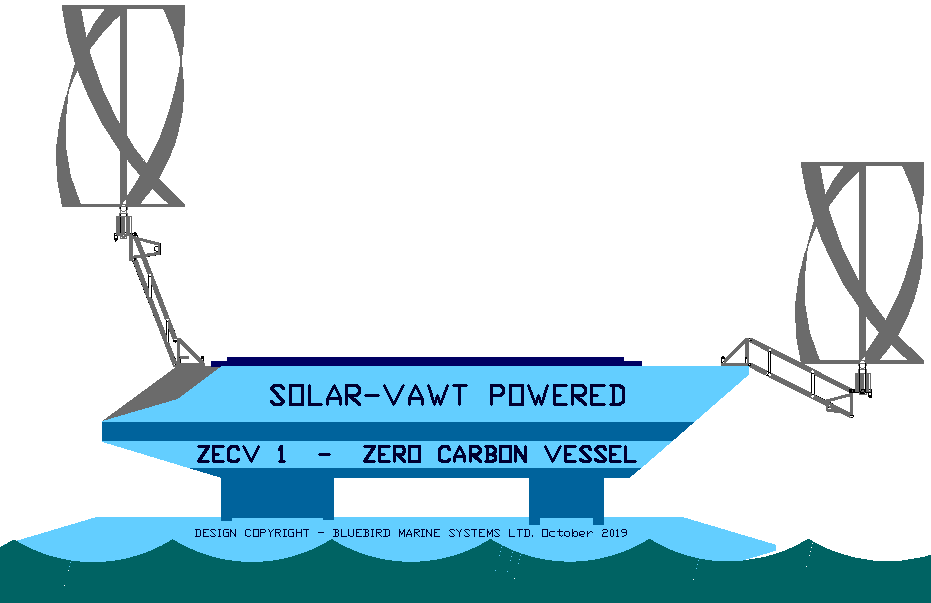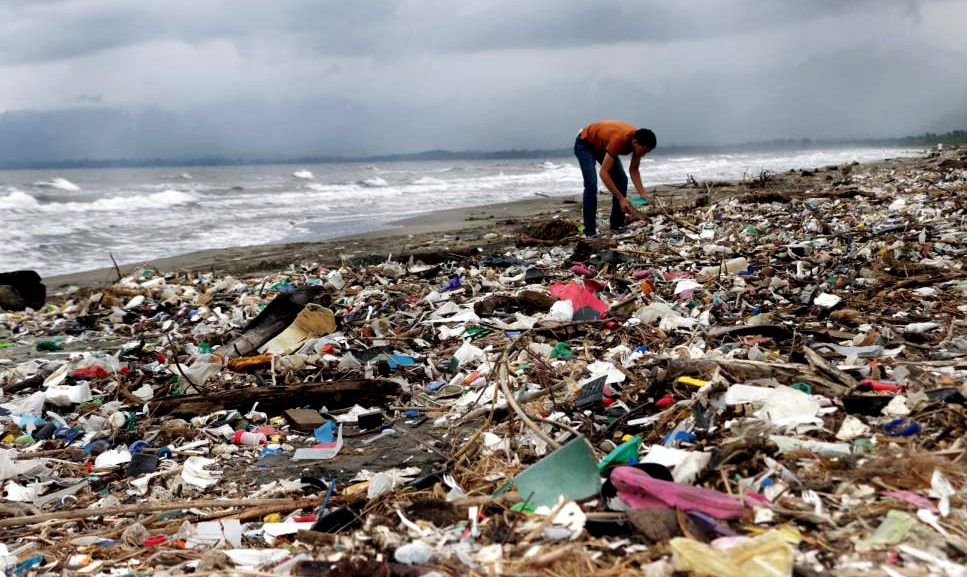|
H2020 WORK PACKAGES 3. PROGRAMMING
Please use our A-Z INDEX to navigate this site, where page links may lead to other sites
|
|||||||||||||||||||||||||||||||||||||||||||||||||||||||||||||||||||||||||
|
LITTER CLEANER - This 44m machine is designed to be operated in fleets to target ocean waste in blue water and in rivers. This present proposal is for a pilot derivation of the above machine, limited to around 16 meters in length, with an active cleaning head spanning 6.75 meters. This 1:20 model did not feature moveable wind turbines and the solar wings had limited angular movement. The proposed Pilot vessel will be around 7.5 times the size of this proof of concept machine.
Divided into ten Work Packages (WPs), COFs project structure aims to harness the potential of each individual partner and at the same time promote collaboration within a consortium of expert organizations, while also covering all its research, technology and management aspects.
Work Package 3 involves all aspects of computers and programming such as to interface with sensors in D. to control the marine litter collecting (head) machinery and other vessel systems, such as energy harvesting and management.
This also involves the testing of the 'filtration head' in controlled (test tank) conditions off board in scale simulations and subsequently as full size versions taking the litter harvesting system to TRL5
WEATHER STATION - Reading the environment is necessary to be able to trim the wind turbines and solar arrays. In one experiment a Raspberry pi is used to operate the hydraulics that position the wind turbines according to wind speed as read by this anemometer. Banks of relays trigger the solenoids in sequence to open and close the hydraulic valves for the lifting and lowering rams. Copyright © diagrams 29 April 2019. All rights reserved, Cleaner Ocean Foundation Ltd.
PROGRAMMING - It's a lot of hard work, building a program to read all the elements needed to control an energy harvesting station. Some code is available as free source, but most of what is needed to make a workable solution has to be custom written. A Belgian student is seen here working on coding for wind speed measurement sensors. She worked on site for 3 months, returning to Belgium to further develop a software model. Copyright © photograph 9 May 2019. All rights reserved, Cleaner Ocean Foundation Ltd.
PROJECT WORK PACKAGES -
3. PROGRAMMING 7. OPERATIONS 8. RECYCLING
SOLAR VAWT PLATFORM - This 16m (LWL) design features a collecting head approximately 6.75 meters wide and a 20 ton storage capacity. The machine is solar and wind powered for sustainable long endurance tours of duty. In this case featuring vertical axis wind turbines.
12
METER -
In this diagram we see how a cleaning head at the operating end of this
vessel (shown in red on the left) might be incorporated as part of a
dedicated litter collecting machine. This design has limited storage and
energy harvesting capacity, hence may not fare as well in operations over
six months.
TECHNOLOGY SUPPLIERS
SDG 2 Zero Hunger; SDG 6 Clean Water and Sanitation; SDG 8 Inclusive and sustainable economic growth; SDG 9 Sustainable Industrialisation; SDG 11 Sustainable Cities and Communities; SDG 12 Responsible Consumption and Production; SDG 13 Climate Action; SDG 15 Life on Land.
PROBLEM - From 2000 to 2012, the National Marine Fisheries Service reported an average of 11 large whales entangled in ghost nets every year along the US west coast. From 2002 to 2010, 870 nets were recovered in Washington (state) with over 32,000 marine animals trapped inside. Ghost gear is estimated to account for 10% of all marine litter.
LINKS & REFERENCE
http://
COASTAL TOURISM - Beaches like this all over the world tell the story, affecting coastal tourism and killing wildlife.
H2020 WORK PROGRAMME - Pilot action for the removal of marine plastics and litter. Cleaner Ocean Foundation Ltd would be interested in forming or joining a consortium for this call and are currently seeking eligible collaborative partners within and outside of the EU.
| |||||||||||||||||||||||||||||||||||||||||||||||||||||||||||||||||||||||||
|
"Be the solution, not the pollution."
ABS - BIOMAGNIFICATION - CANCER - CARRIER BAGS - COTTON BUDS - DDT - FISHING NETS - HEAVY METALS - MARINE LITTER - MICROBEADS MICRO PLASTICS - NYLON - OCEAN GYRES - OCEAN WASTE - PACKAGING - PCBS - PET - PETROLEUM - PLASTIC - PLASTICS - POLYCARBONATE POLYOLEFINS - POLYPROPYLENE - POLYSTYRENE - POLYTHENE - POPS - PVC - SHOES - SINGLE USE - SOUP - STRAWS - WATER
Please use our A-Z INDEX to navigate this site, where page links may lead to other sites
| |||||||||||||||||||||||||||||||||||||||||||||||||||||||||||||||||||||||||
|
This website is provided on a free basis as a public information service. copyright © Cleaner Oceans Foundation Ltd (COFL) (Company No: 4674774) 2019. Solar Studios, BN271RF, United Kingdom. COFL is a company without share capital.
|







